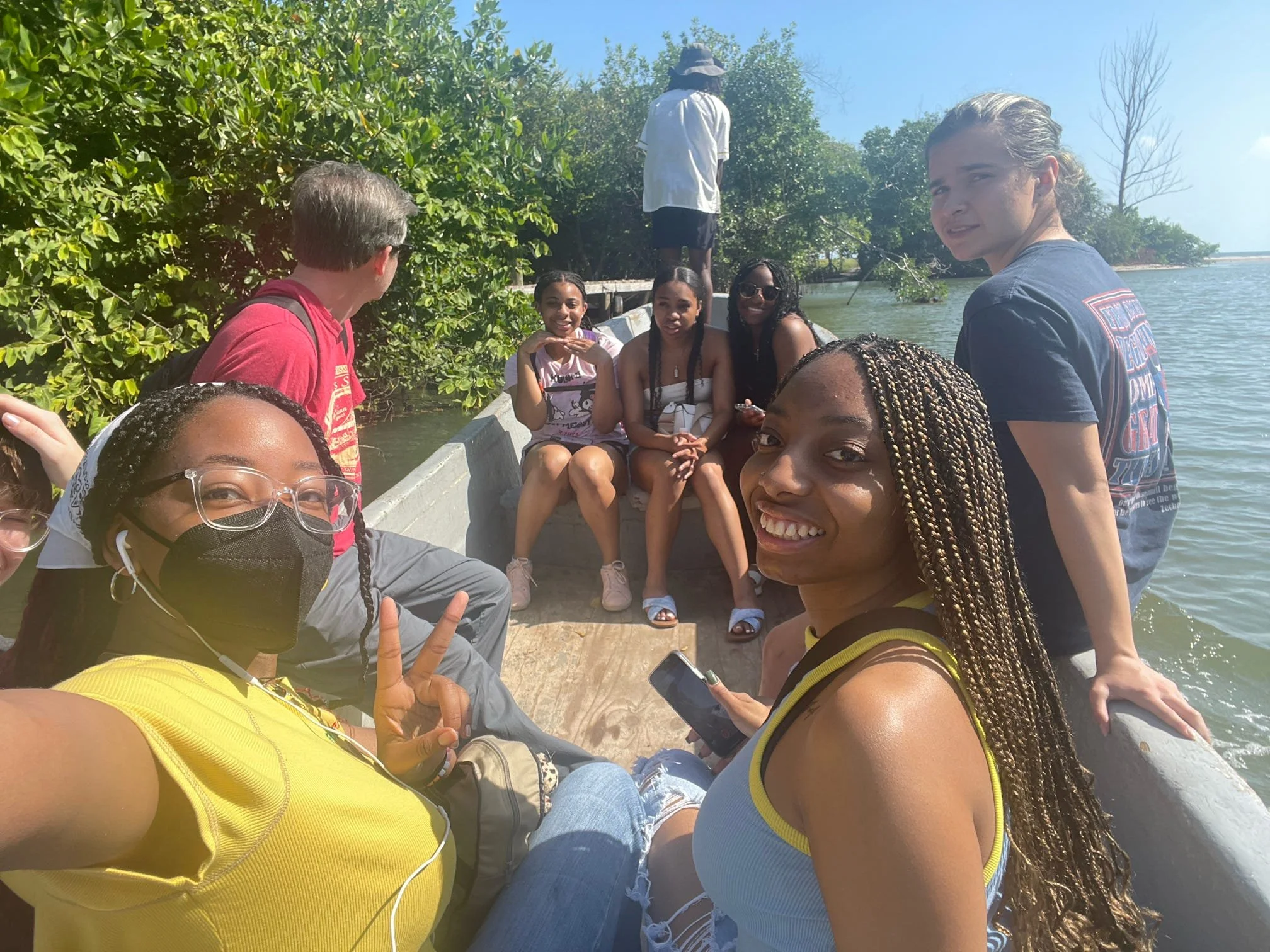Studying Abroad During a Pandemic
/by Makayla Vasek, Summer 2020 Marketing Intern
Canceled Study Abroad Plans
“All 2020 study abroad programs canceled” are the words I see headlining university newspapers across the country. How long will it be before my university releases a similar statement? As campus administrators respond to the COVID-19 pandemic, I’ve been told that student safety is a top priority, but the consequences of canceled and postponed study abroad programs extend far beyond canceled flights. My study abroad planning started two years ago, the moment I stepped foot on my university campus. During this time, I have been arranging travel plans, completing health physicals, and applying for scholarships. Now, like many other students and faculty, I find myself back at square one.
I waited as long as I could before making the decision, keeping hope in a fast global recovery. With coronavirus cases spiking in the U.S. and only two months remaining before my departure for Costa Rica, however, I deferred my fall program application, canceled my flight, and began the stressful process of rearranging my college degree plan. Not to mention that I had no place to live for the 2020 Fall semester. I consider myself lucky to have two more years of college left to satisfy my study abroad ambitions. For senior students, study abroad has likely been removed from the table entirely.
The Rise of Virtual Classrooms
My passion for international education led me to work as a remote intern with Learn from Travel this summer. In this role, I’ve learned that universities are attempting to supplement these lost programs by turning to the resources of study abroad providers, who are developing virtual classrooms overnight. “Virtual” and “study abroad” might sound like opposing ideas, but canceled programs and low enrollment are motivating providers to imagine a new reality for study abroad. Suddenly, phrases such as virtual internships and virtual study abroad are becoming a regular part of my conversations with other students and professors.
When my study abroad advisor emailed me a virtual program brochure in response to my deferral request, I was initially unimpressed, but thought I might as well log on to the listed information session to see what this was all about. In one hour-long video call, my eyes were opened to the possibilities of virtual study abroad and the opportunity of growing my own global network even as I was isolating at home.
Virtual Learning vs. Remote Learning
But what is virtual learning? The hesitance many students and professors show towards virtual study abroad, myself included, is not born of disinterest. We are simply unaware of the capabilities of virtual technology. Students immediately picture monotone Zoom lectures while professors imagine a screen of blank boxes. We are stuck in the world of remote learning.
Since the spread of COVID-19 to the U.S., we have been adapting to remote classes with little preparation. Remote learning, then, was a response to health regulations and follows the same format as an in-person course with minimum adaptation for online engagement.
On the other hand, virtual learning is created with the online participant in mind. Elements such as 360° video, conferencing software, and collaborative projects make virtual learning interactive and rewarding for faculty and students.
5 Benefits of Virtual Study Abroad
I dug deeper and deeper into this concept. After spending several weeks researching study abroad and virtual alternatives, and speaking with faculty, study abroad directors, and students as part of my internship, I’ve identified the following major benefits of virtual study abroad:
Virtual Study Abroad is More Affordable
The elimination of travel and housing costs immediately make virtual study abroad more affordable. With virtual learning depending solely on technology costs, programs will be cheaper to run with greater student capacity. As a result, individual participant costs will be significantly lower than traditional study abroad. For example, a 12-credit hour semester abroad at the University of Ireland through API costs $17,280 (excluding travel and living expenses) while the virtual alternative costs $11,050 in total.
Virtual Study Abroad is Widely Accessible
Excluding financial barriers, faculty and students choose not to study abroad for a multitude of reasons. Athletic schedules, student teaching requirements, and pressure to participate in summer internships keep students in the U.S., while on-campus classes and research projects take priority over teaching abroad for faculty. The opportunity to study abroad from home will cater to these various needs. The feasibility of virtual learning is also accelerating as technology becomes cheaper and more readily available to both parties.
Virtual Study Abroad Improves Diversity
Improved affordability and accessibility relate to the opportunity to diversify study abroad. As of 2018, white students represented 70% of U.S. study abroad participation while only accounting for 55% of U.S. higher education enrollment. By implementing virtual study abroad programs, universities can bring students from all backgrounds together to experience another culture while learning from each other.
Virtual Study Abroad is Sustainable
As more people acknowledge the environmental implications of their actions, ecotourism and sustainable study abroad is becoming increasingly important to study abroad participants. Virtual learning leaves a negligible carbon footprint and requires fewer resources from universities and host communities.
Virtual Study Abroad Provides Global Engagement
Right now, for the safety of ourselves and our global counterparts, travel is not an option. But, that is not a reason to discontinue the cultural engagement that study abroad offers. By incorporating museum tours, cooking classes, and conversations between students from different countries into virtual programs, universities have the opportunity to further internationalize education on campus. An engaging virtual study abroad program can also motivate students to physically study abroad when the opportunity becomes available.
Virtual Faculty-led Study Abroad
These benefits are important for students on long-term programs, but what about short-term study abroad? Over the course of the summer, Learn from Travel has been working hard to develop alternatives for faculty and students grounded by the pandemic. It has been an exciting time to be an intern with this company.
Virtual faculty-led study abroad with Learn from Travel combines technology with remote interaction to create an international educational experience guided by faculty. Learn from Travel acts as the facilitator between U.S. faculty and students and in-country academics and community leaders. Learn from Travel also provides IT support, conversation facilitation, live translation, and even interactive 360° videos. These fully customized programs are built from the ground up using a combination of the following modules:
Live Streamed Video Calls - Students can speak directly with topic experts and peers in other countries and experience remote site tours. Learn from Travel will find unique people from all walks of life and backgrounds to complement any course curriculum. This requires nothing more than a video conferencing app like Zoom or Google Hangouts.
Collaborative Online International Learning (COIL) - International teams of students conduct research, or engage in a project, collaboratively and share their findings remotely. Learn from Travel matches faculty in the U.S. and abroad and facilitates the project. COIL can be organized using free cloud-based apps such as Google Docs and Google Slides.
Interactive Panoramic Content (IPC) - 360° videos and photographs embedded with educational content can simulate the travel experience in an exciting and engaging way. Learn from Travel can use stock images or shoot custom photos and videos for this innovative format. The content can be viewed on any screen, but a virtual reality viewer (i.e. Google Cardboard) makes it much more engaging and immersive.
Virtual Internships - Students can gain international work experience with nonprofit organizations in other countries. Learn from Travel will help with placement and facilitate projects that develop skills for the intern while meeting the objectives of the host organization.
All of the elements listed above can similarly be integrated into virtual pre-departure and post-return modules when it is again safe to run traditional study abroad programs. Visit the Learn from Travel Virtual Study Abroad page to learn more about innovative faculty-led programs and internships.
The Future of Study Abroad
While there is still much to learn and develop regarding virtual learning, I am convinced that virtual is here to stay. Today, professors and students view virtual study abroad as a Plan B, but I suspect that virtual programming will become an integrated part of study abroad for future students. COVID-19 has altered the reality of study abroad permanently, but these changes come with untapped virtual opportunities including:
Hybrid experiences
Pre-departure modules
Post-travel resources
Looking toward the fall semester, I’m still evaluating my options for virtual study abroad and how it will impact my degree plan. While simultaneously taking remote classes through my home university, I plan to apply to be part of a Global Innovation Lab, in which I will have the opportunity to engage in team problem-solving with other globally focused students. While virtual will not replace traditional study abroad, or my own travel plans, it is a supplementary tool that can help internationalize U.S. higher education, motivate students to further expand their worldviews, and help many catch the travel bug...the good kind.















